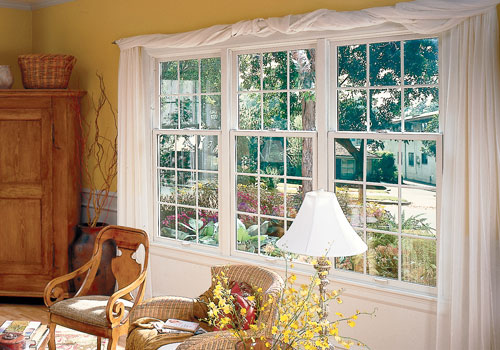MENU



One of the primary reasons homeowners replace their windows is to save on energy costs. If you want to save as much energy as possible, it is important to choose your replacement windows carefully. Those with low-e glass, such as Renewal by Andersen’s SmartSun™ glass, will save you the most energy by keeping your home warmer in the winter and cooler in the summer.
How Does Low-E Glass Reduce Your Energy Bills?
The “e” in “low-e” glass” stands for emissivity, a term that refers to the percentage of heat that is transferred through glass. Standard glass has an emissivity of 84%, meaning that 84% of heat that hits the glass radiates through it. In the winter, this means a lot of heat escapes from your home and into the outdoors. In the summer, the heat outdoors is easily transferred inside through standard glass.
Low-e glass has a lower emissivity than standard glass, so less heat is transferred through it. Depending on their quality, low-e windows tend to have an emissivity of between4% and 8%. In the winter, this leads to lower heating bills, and in the summer, it leads to lower air conditioning bills. Renewal by Andersen’s Low-E SmartSun™ glass is also made to specifically filter out 95% of the harmful UV rays without blocking the refreshing glow of sunshine. As a result, not only are your energy bills lower, but your home interior is protected from fading and sun damage.
What Does Low-E Glass Look Like?
Low-E glass windows look just like standard glass windows. They’re simply coated in a very thin, transparent coating that causes more light and heat to be reflected rather than radiated through the glass. Low-E glass windows still let sunlight into your home, so you can enjoy the beauty of natural light. They simply control how much sunlight, and of what wavelengths, is let through. This is perfect in a place like Cincinnati where, during the cold winters, you want to enjoy the beauty of sunlight when it peaks out from between the clouds, but you don’t want to let the cold inside.
How Much Do Low-E Windows Save?
You can expect to save around 15% per year on your energy bills when you switch from standard, non-coated, double-pane windows to new, low-e glass windows. However, exactly how much you save will also depend on a number of other factors, such as whether you choose windows that are filled with an insulating glass, and whether you choose a more insulating frame material. In other words, low-e glass is just one of many features that make replacement windows more energy efficient.
If you’re seeking replacement windows for your Cincinnati home, be sure to ask your window contractor about low-e glass. Contact Renewal by Andersen to schedule your appointment for a free in-home estimate.